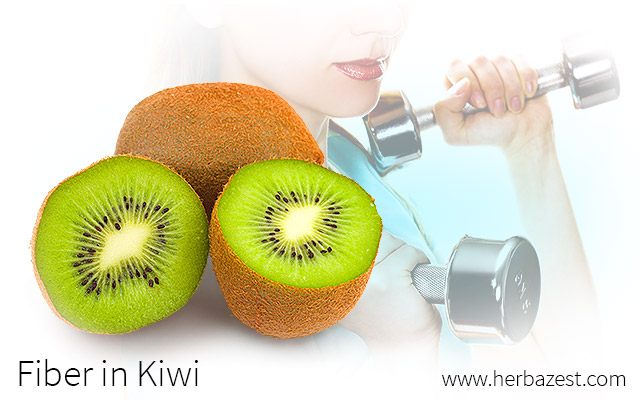Research shows that many people lack a sufficient amount of fiber in their diet. While fiber can be found in numerous sources - including fruits, vegetables, and grains - some foods contain higher levels of fiber than others. Kiwi's fiber content has been highly praised, and research is beginning to discover the benefits of consuming this fruit regularly.
What Is Fiber?
Fiber is a type of carbohydrate that can't be broken down or absorbed by the digestive system, and it helps to control the body's use of glucose by regulating hunger and blood sugar levels.
CONSUMING FIBER CAN HELP TO LOWER THE RISK OF DEVELOPING HEART DISEASE, DIABETES, DIVERTICULAR DISEASE, AND CONSTIPATION, AMONG OTHER HEALTH CONDITIONS.
The two main types of fiber to know are soluble and insoluble. While soluble fiber dissolves in water and is used to help lower glucose levels and blood cholesterol, insoluble fiber can't be dissolved and helps food pass through the digestive system, thus naturally aiding waste disposal. Insoluble fiber is most commonly used to help prevent constipation, which is the most common gastrointestinal condition in the United States.
While the recommended fiber intake for children and adults is 14 grams per 1,000 calories, less than half of U.S. children and adults meet this amount. Fiber can be found in whole grain foods, fresh fruits and vegetables, legumes, and nuts. While these are all great sources of fiber, some food items contain more fiber than others and therefore are more beneficial.
Fiber in Kiwi
The amount of fiber in kiwi is three grams per 100 grams. This means that one cup, or 180 g, of sliced kiwi provides 5.4 grams of fiber, and the fiber content in a 69-gram kiwi is 2.1 grams.
While kiwi's fiber content is highly valued, many other fruits and vegetables also provide fiber, some in greater amounts than kiwi. Avocado is one example of a rich source of fiber, with a total of 6.7 grams per 100 grams. Another fruit that provides a great deal of fiber is orange. Including the peel, a 156-gram raw orange contains 7.2 grams of fiber (4.5 g per 100 g), whereas dried plum or prune provides 7.1 grams per 100 grams.
The fiber content in kiwi may not be the highest, but it does have a higher concentration than many other fruits, such as banana (2.6 g per 100 g), blueberry (2.4 g per 100 g), and mango (1.6 g per 100 g).
According to the California Kiwifruit Commission "two kiwifruits daily provide more fiber than a bowl of bran cereal."
The effects of fiber in kiwi have been studied to examine whether it can be used in the prevention or treatment of certain conditions. A study published in the World Journal of Gastroenterology (2007) tested whether the fiber in kiwi improves constipation. Over the course of four weeks, 33 constipated patients and 20 healthy volunteers consumed kiwifruit twice daily. The trial showed that the constipated patients experienced an improvement in complete spontaneous bowel motion, satisfaction of bowel habit, and decreased use of laxatives.
Whether soluble or insoluble, fiber consumption is necessary in a healthy diet and great for constipation relief, as well as for preventing the development of many health conditions. Consuming the fiber in kiwi is a great way to reach the daily recommended intake, with the added nutritional benefits of this delicious green fruit.
Sources
- California Kiwifruit, Get the skinny on kiwi nutrition!
- Harvard University, Fiber
- National Fiber Council, About Fiber
- National Institutes of Health, Dietary Fiber
- Nutrition Reviews, Health benefits of dietary fiber, 2009
- World Journal of Gastroenterology, Increasing dietary fiber intake in terms of kiwifruit improves constipation in Chinese patients, 2007
- USDA Nutrient Database, Kiwifruit, green, raw




